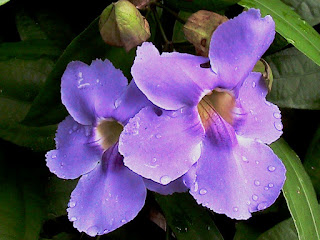Renwick, myself, his niece and a school-girl from up the road headed into Kingstown in his minivan. It was over the hill from Cane Garden, and when we reached the top of the headland, there was a view of the small town in a protected bay, encircled with steep green hills and high volcanic peaks.
I got dropped off at the botanic gardens, on a hill just above town. Founded in 1762 as a commercial breeding ground for plants brought from other parts of the world, these botanic gardens are supposedly the oldest in the western hemisphere. They were the destination of Captain Bligh, who after the mutiny on the HMS Bounty, made a successful second voyage, bringing over, amongst other plants, suckers of breadfuit. These were planted in the Caribbean primarily as a staple food for the slave population, and can now be found on all the islands. Descendants of the original plants can be found in the botanic gardens.
The gardens also have a Saint Vincent Parrot breeding programme for these colourful and endangered parrots, the national bird of this island nation.
The green and white pavillion, with its moat of lilies is at the centre of the long thin gardens, which occupy a small valley.
On a tree was a bright green lizard, with irridescent blue eyes, not at all shy.
Looking up the gardens to the green forested hills behind.
All around there are tropical flowering plants. Below is the flower of the cannonball tree, growing amongst many others directly off the trunk.
Many of the other flowers reminded me of ones found around Rio de Janeiro and along the southeast coast of Brazil, which has a similar humid tropical climate to the Caribbean.
Blue trumpet vine (Thunbergia grandiflora).
Purple jacaranda, orginally from Brazil, Argentina and Uruguay, and widely planted in Africa, is known in St Vincent as the Fern Tree, due to the shape of its leaves.
In keeping in with flowers from the British empire, this is the Pride of India (Lagerstroemia speciosa).
Yellow alamanda, forming an arch over the grassy path.
Leaves of the breadfruit tree and a flowering yellow Cassia.
A great and natural start to the island nation of St Vincent and the Grenadines.















